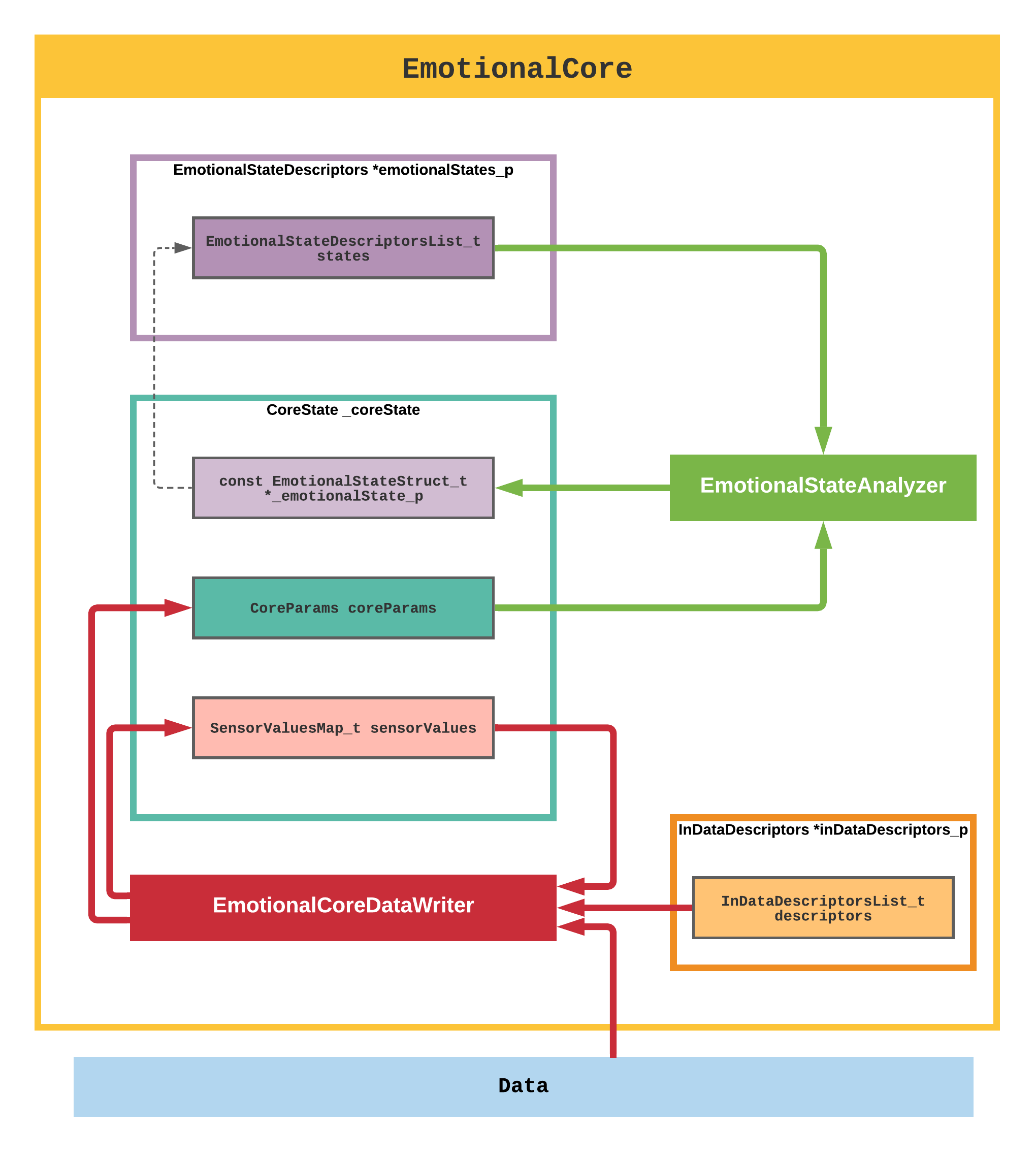Now after some polishing of the basic emotional core I can tell about how it works and about it's structure.
Emotional core consists of three main parts (see the picture bellow):
- Input Data Descriptors - describes data from sensors and how it should affect the core
- Emotional States Descriptors - named states of the core described by specific values of core parameters
- Core State - contains core parameters, value of sensors and pointer to relevant to parameters Emotional States Descriptors

Or more detailed:

When you write the data, the core does the following:
- updates saved sensor value
- updates core parameter: param += (new_sens_val - old_sens_val) * weight
- updates the current core state based on updated parameters
Here are some examples of data that could be used with the core.
Example of core parameters:
[ "cortisol",
"dopamine",
"adrenaline",
"serotonin" ]
Example of a core's emotional state:
{
"name": happiness,
"conditions": [
{
"param": "cortisol",
"op": LESS_THAN,
"value": 10
},
{
"param": "serotonin",
"op": GREATER_THAN,
"value": 100
}
]
}
Example of input data descriptor:
{
"sensor_name": "temperature sensor",
"val_min": 0,
"val_max": 255,
"weights": [
{
"core_param_name": "serotonin",
"weight": 0.5
},
{
"core_param_name": "cortisol",
"weight": -0.5
}
]
}
Input data example:
{
"sensor_name": "temperature sensor",
"value": 120
}
My next step will be in looking appropriate parameters and weights that can adequately describe (roughly of course) some human emotions.
Source core: https://github.com/an-dr/r_giskard
 Andrei Gramakov
Andrei Gramakov
Discussions
Become a Hackaday.io Member
Create an account to leave a comment. Already have an account? Log In.